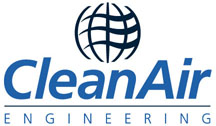
 |
|
|
Folder
|
|
|
Procedures: A. Electrical Motor Problems (of any size for any application).
1. First, check the main control panel to see if fuses are okay. Then check magnetic starters (when applicable) to make sure the heaters are okay. Check for the general condition for burn marks or other signs of disrepair.
2. Pull the cover off the motor and check for power. If power is available, see if the motor is bound up. If that is the case, determine why and correct the problem. If the motor turns easily check the motor with meter to determine if motor is burned out, replace as necessary. B. Whole Building Ventilation Problems 1. Determine whether the problem is one of negative or positive pressure in the building. 2. If negative pressure is the problem, check all supply blowers in the mechanical room. If all three are running, check: to see if the laboratory hoods are not wide open, dampers on supply ducts are open, the pneumatic controls are working, and the filters are not plugged up. The filters needing replacement is the most common problem. 3. If a positive pressure exist, take the following steps: a. Check S-1, S-2 and S-3 for excessive speed causing too much airflow into the building. The static pressure can be monitored on the Landis and Gyr computer on the second floor. b. Determine if the return blowers are running properly. Check for broken or slipping belts and for motor malfunction. c. Check to see if the fume hood exhaust blower is working properly. C. Local VAV Ventilation Problems
1. Visit area and make a list of possible causes A. Control problems a. Thermostat setting or b. Pneumatic tubing connections to VAV and thermostat B. Air flow or supply air temperature problems a. VAV damper setting b. Manual duct damper setting c. Manual poke damper setting C. Water flow or water temperature problem
2. If you think it is a control problem A. Set thermostat above actual room temperature a. Thermostat should hiss slightly b. Hot water coil should get hot c. Damper should retract to 25% closed position d. Air flow |
| Last Template Update: September 7, 2005 |
|---|